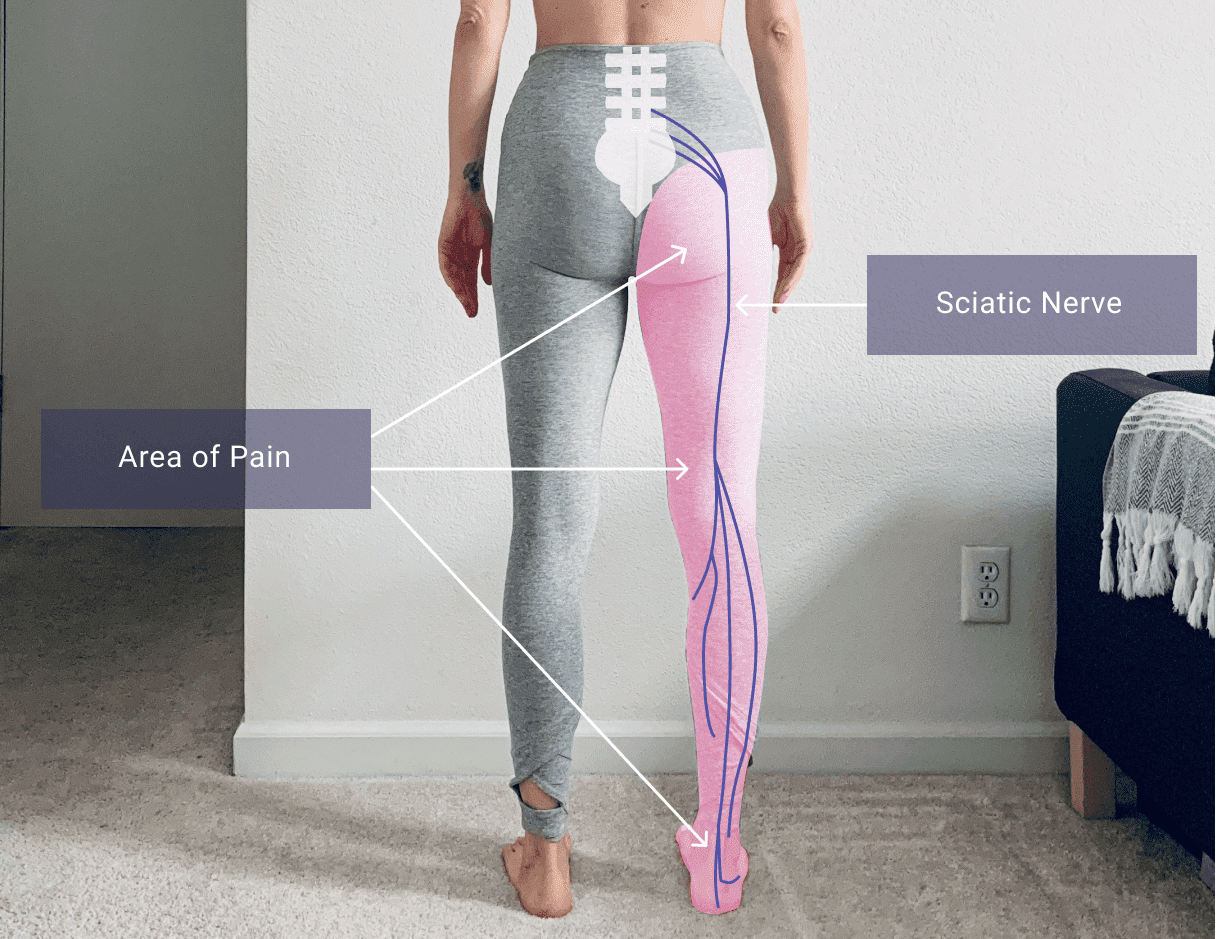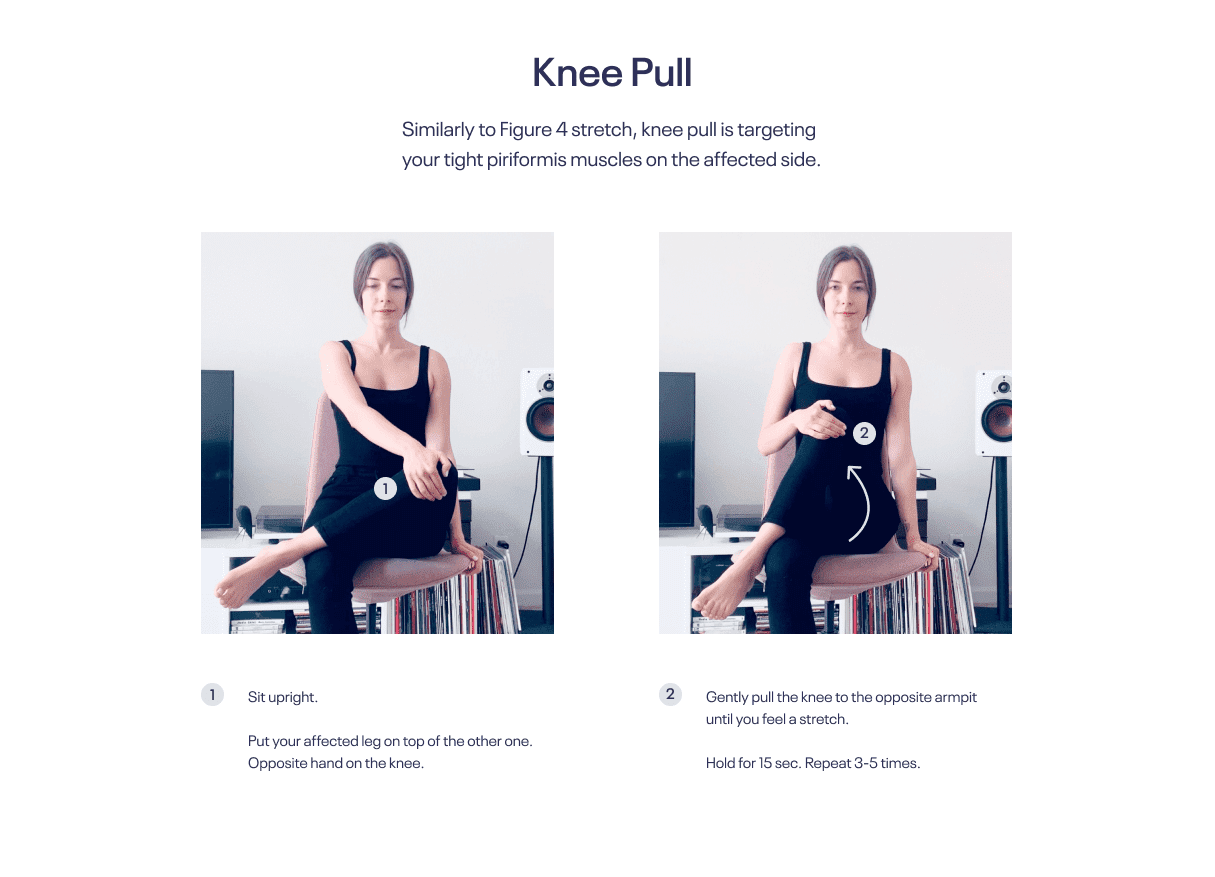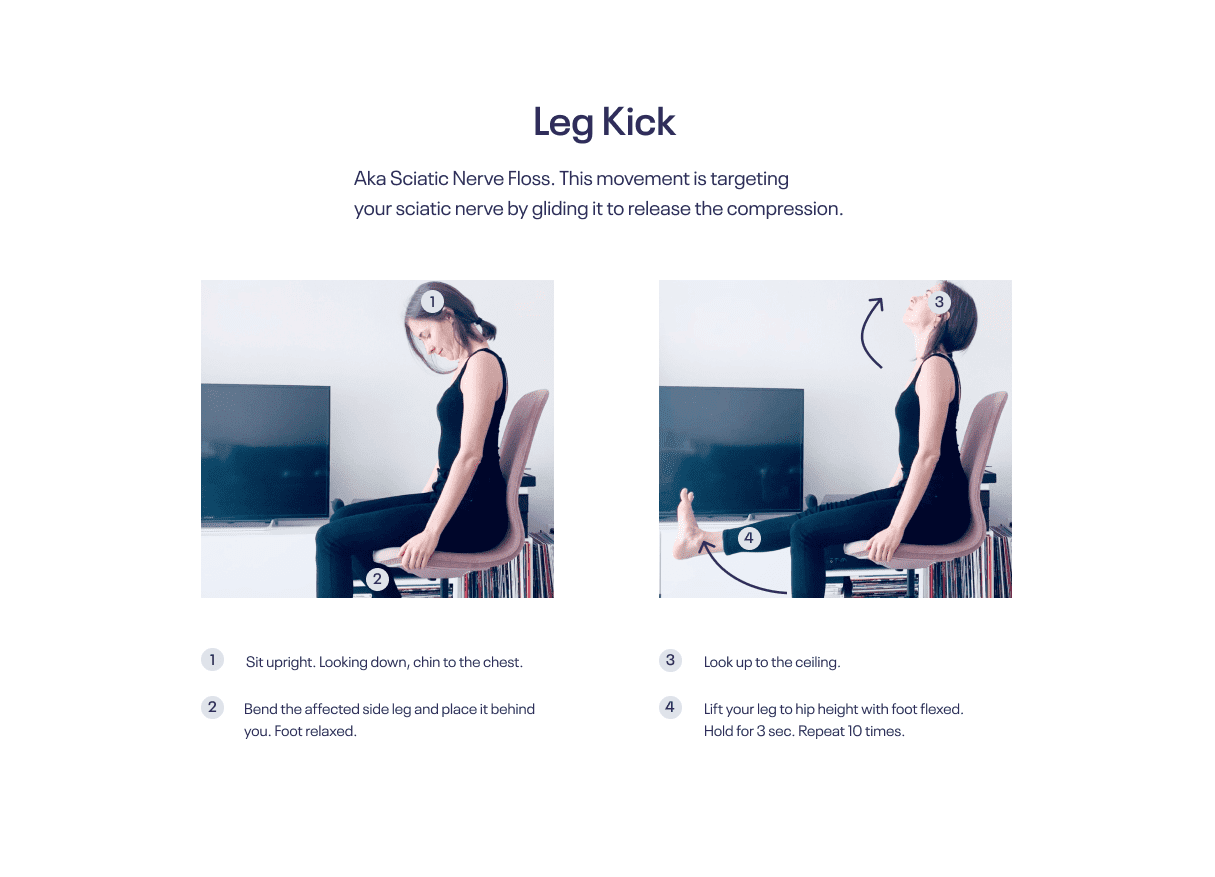3 Stretches to Relieve Sciatica Pain. Do Them at Your Desk!
If you are complaining about a pain in your butt extending down the leg when sitting, you might be a victim of sciatica. Sciatica pain touches about 40% of people throughout their lives, and those with a sedentary lifestyle or previous episodes of lower back pain are more prone to be affected.
Some cases of sciatica are acute and go away within hours or days. Some like to linger on for weeks or months.
Whether you are temporarily affected by sciatica pain or are struggling with it for a prolonged time, it is useful to know how you can relieve it and prevent future flare-ups. In this article, I’m going to explain what sciatica is and how to relieve sciatica pain with a few stretches you can do anywhere, even at your desk!
What is Sciatica?
Sciatica is a syndrome that develops when your sciatic nerve running from your lower back down the leg, gets compressed somewhere on its pathway. With that compression comes an unpleasant tingling, numbness or pain, that often starts at your buttock and can progress down the leg depending on where the nerve is entrapped.
According to Spine Health, sciatica mot often arises due to disorders in between L5-S1 discs, which are located in your lower back region. Traumas such as disc herniation are one of the leading causes of sciatica pain.
What Makes Sciatica Pain Worse?
Sciatica can get aggravated with running, walking upstairs, or sitting. While you can partially avoid the first two activities, chances are you are still going to be seated for a large chunk of time, especially if you are an office worker.
Sitting for a prolonged time certainly doesn't help to relieve sciatica pain. Even if you choose a standing desk, all the time spend in the conference rooms plus commuting to work are going to make your butt muscles tight, your lower back tired, and on some occasions, your sacroiliac joint misaligned.
It all may sound overwhelming, but there are ways to deal with it and ease it despite all the sitting.
How to Relieve Sciatica Pain?
Here are a few recommended changes you can incorporate into your daily life to relieve sciatica pain.
-
Sit Correctly at Your Desk
- Choose a chair with a lumbar support
- Keep your feet flat on the floor, and if possible, please, I know it's hard, refrain from crossing your legs!
- Make sure you are sitting on your sit bones. That should feel effortless and ease discomfort in your back.
Try this pelvic rock to find your neutral spine and pelvis position. It should feel rather effortless and easy on your back.
-
Set up Your Workstation Ergonomically
Ergonomic specialists can help you best adjust your workstation to minimize the strain that you put on your body during office hours. In case there are no such specialists around, read my article, in which I explain the ergonomics of seated and standing workstations.
-
Take Walk Breaks
Make a memo about taking walk breaks. Try to get up of your desk every hour, and if you have more time on your hands, take a short 15-minute walk trying to avoid the stairs not to aggravate your sciatica.
-
Stretch and Exercise
Take time to do stretches and strength exercises in front and outside your workstation. Personalized programs from Relevel app select exercises best suited for your lifestyle and needs.
-
Avoid Lifting Heavy Objects
But if you really need to maintain a neutral spine. Practice squatting to lift something heavy. Keep the object you lift close to your chest to avoid a strain in the lower back.
Stretches to Relieve Sciatica Pain
Your piriformis muscle (deep gluteal muscle) gets tight from all the sitting and lack of stretching and strengthening. A tight piriformis muscle can compress on the sciatic nerve that runs through that area. Stretching your piriformis will help to ease the pain coming from sciatica.
Here are three stretches to help you ease sciatic nerve pain. Take breaks to do them in front of your desk.
-
Figure 4 Stretch
Sit tall on top of your sit bones (of course) and cross the affected side leg over your other leg to create a figure 4 shape. Hold for 15 seconds, release and repeat three times. To increase the stretch, keep your back neutral and lean forward from your hip joints.
Tip: Flex your feet to deepen the stretch.
-
Knee Pull
From a tall seated position, cross your legs as for figure 4 stretch and pull the top leg towards the chest. Hold for 15 seconds, release and repeat three times.
Tip: Don't tuck your tail under to bring your leg closer to your chest. Keep your spine neutral. Your range might be small, but the stretch will be deeper.
-
Leg Kick
This is a sciatic nerve floss. From a tall seated position, kick your leg forward and look up to the ceiling. Hold no longer than 3 seconds. Repeat ten times.
Tip: Keep your hips still. Don't rock your pelvis. Make sure your foot stays parallel and doesn't roll in or out.
Remember, when dealing with nerves, don't overdo the stretches! Nerves are fragile, and it's easier to irritate them. Listen to your body, and if you feel too much tingling or pain, make your range smaller or decrease the number of repetitions.
Practice Every Day
I hope that you find these stretches useful. Keep practicing every day to maintain a healthy body in a desk-bound world.
Subscribe to the Relevel app for more exercise to help you relieve sciatica pain and more.




